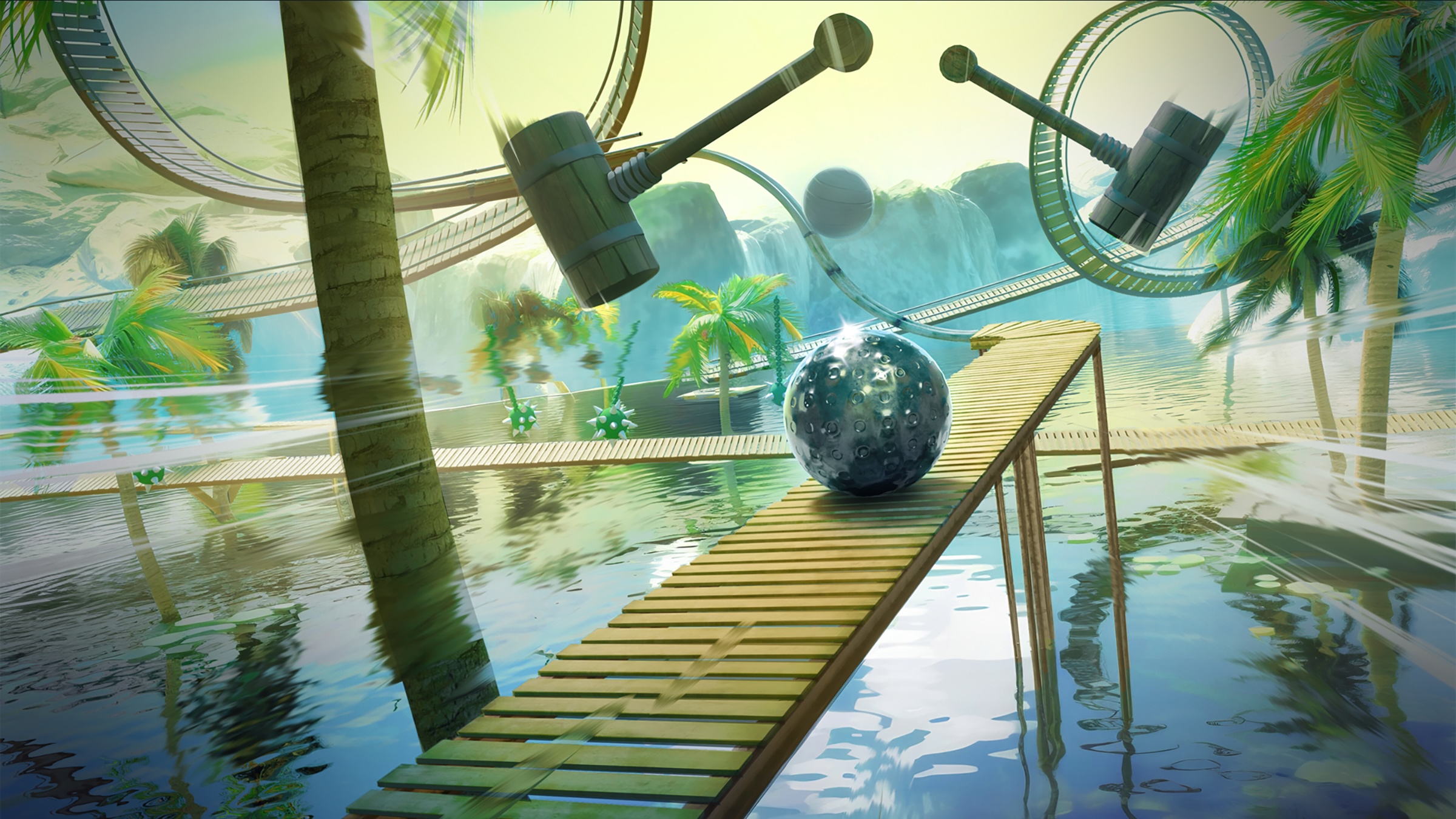What realistic visuals meant for our audience — and for project growth
Three years ago, we pitched an idea to Ates Games: what if we made a game about a ball rolling through obstacle courses? The studio already had a project called Action Balls — and more importantly, they had their own custom physics engine built specifically for realistic ball movement.
That gave us a strong foundation. We could build something set in a realistic environment, with the same feel as physics-heavy PC games in this genre, which stood out, especially considering that most mobile competitors at the time were cartoonish and heavily scripted. That’s how Rollance was born.
At first, we had a simple hypothesis: realistic visuals might help us bring CPI down. In practice though, it turned out to be more than that. Thanks to its physics and serious tone, Rollance struck a chord with more hardcore players — the kind who are really looking for a challenge. We gained a loyal audience and solid retention. But that also came with its own set of development hurdles.
Launch and growth
We started building the game without testing the setting first — we just went straight for 20 levels. But the team had a strong background to lean on: they’d already been sharpening their skills with Action Balls, and all that work carried over to Rollance.
The thing is, Rollance didn’t have much content at launch, and adding more is a slow process. Realistic physics and visuals mean development is more time-consuming. You can’t rush level design — you need to balance everything carefully, and keep difficulty from spiking too fast. On average, building a single Rollance level takes at least twice as long as it did in Action Balls.
If we had gone for a different audience and chosen cartoon-style graphics, we could’ve just scripted half the obstacles — traps, turns, all of it. But our players wouldn’t have liked that, and the metrics would’ve looked completely different.
Once it was clear the launch was successful, we knew what we needed to do first: add more content. That gave the biggest boost to the already-strong numbers. And since then, content production has basically never stopped.
The biggest challenge isn’t even the visuals — it’s the physics. The whole game is built around it. Every mechanic — from slopes and curves to dynamic obstacles and supports like fans — needs to be carefully tuned. Physics has a lot of variables, and each new mechanic needs to be coordinated so that nothing breaks the player’s experience.
In most arcade games, you can simplify a lot of that. But in Rollance, realism is the whole point — it’s our edge.
We also added a smooth-follow camera early on to reduce friction. Players no longer have to rotate the camera manually — it tracks movement automatically. Of course, that meant scripting it per level, which added another layer of dev time and cost.
Another big early update was material swapping. Originally, we just had one ball with realistic physics. Then we introduced the ability to change the material — wood, metal, paper — and, in addition to looking real, each one is supposed to behave and feel differently. This wasn’t something we’d seen in the competition.
At first, we approached it like a hypercasual mechanic: you pick your material and go. But if you chose wrong, the level became impossible. That version didn’t land well — but we’re planning to revisit it in a new format, possibly as part of upcoming event-based content.
From the beginning, we also tested hypercasual monetization ideas: skins, visual effects, trail particles. None of it worked. Rollance players are here for the hardcore challenge and the physics. Visual fluff just gets in the way.
Last year, we introduced adaptive graphics — a surprisingly impactful update. Because of the realistic visuals, the game was pretty demanding on devices. So we started checking hardware specs and adjusting graphic settings in real time if FPS dropped. It worked.
We used presets that dynamically switched shader quality, texture detail, and other parameters — all live, during gameplay. The result? A \~20% boost to LTV, thanks to better device support and a smoother, more satisfying experience.
Rollance also benefits from strong long-term retention, which helps make the project sustainable. Some teams have tried to make a competitor — and spent a lot of resources doing so — but nothing’s quite stuck yet. Even with great long-term retention, not every studio knows how to make performance marketing work, and that’s a big competitive edge for us.
We’re now up to 50 levels and counting. But alongside that, we’re starting to explore a slightly different direction. Rather than add a classic meta layer, we’re going to test in-app monetization through events. So instead of tacking meta on top, we’ll bake it into event content — and build monetization there.
